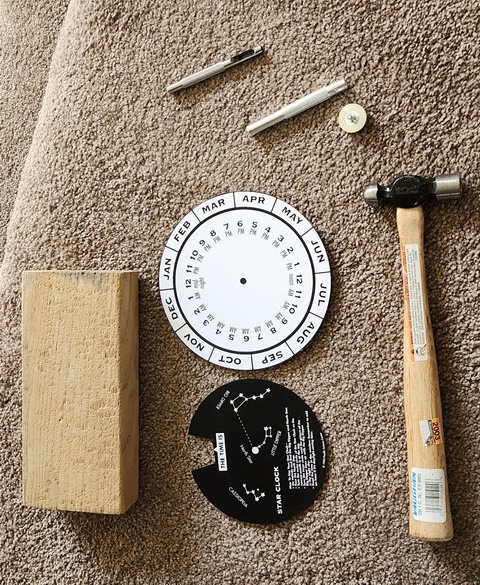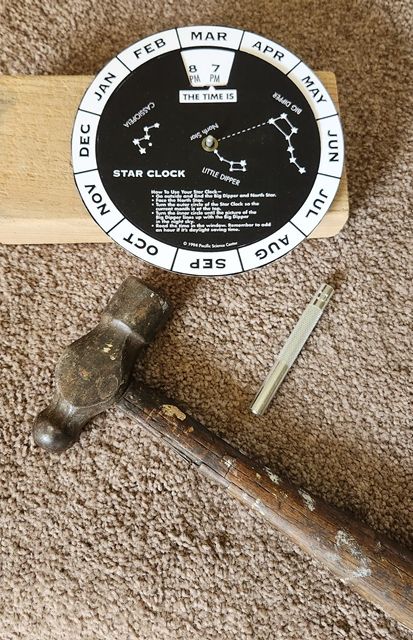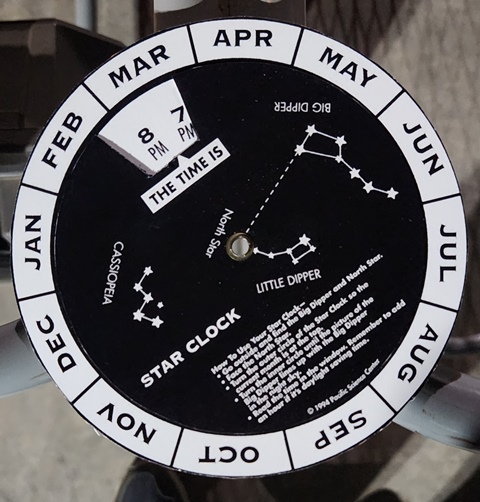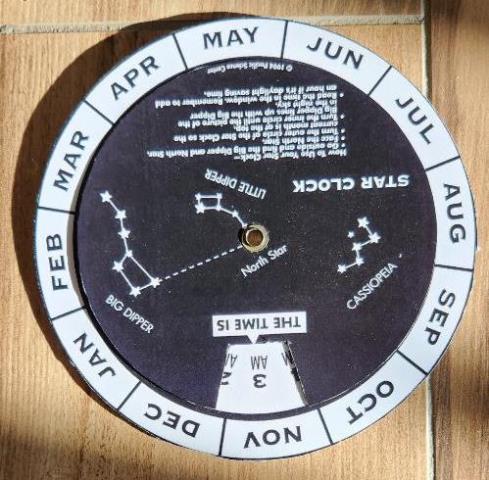It isnít nearly easy to tell the time at night as it is in daylight. One early instrument was a nocturnal, an instrument used to determine the local time based on the relative positions of two or more stars in the night sky. The first nocturnals were described in the 12th century. Internet DIYs for nocturnals arenít particularly easy to find so two possibilities can be found at:
- Make a simple nocturnal clock
I built this Star Clock:
I glued the white, back piece to a piece of cardboard before cutting it out. This made the entire Star Clock easier to use because of the cardboard backing.
I used a grommet to put the two pieces together so the top dial would spin freely
The finished Star Clock
and try it out at least three times when you are observing. Make note of the nocturnal time and clock time.
Date Nocturnal Time Local Clock Time Location of Alignment Constellations 4/11/23 7:45 pm 7:50 pm CST Rising 5/17/23 2:50 am 2:00 am MDT Setting 5/21/23 8:15 pm 9:17 pm MDT Rising How well does it work?
4/11/23 Star Clock Reading
5/17/23 Star Clock Reading
5/21/23 Star Clock Reading
I took two readings with the constellation I aligned on, rising in the northeastern sky. I took the third reading with the constellation I aligned on, setting in the northwest.
I found I has a more accurate time match with the Star Clock and the local time with I used a rising constellation alignment in the northeastern part of the sky. The reading with the setting constellation in the northwestern part of the sky was off by almost two hours.
I am not sure why this discrepency exsists in this device.





